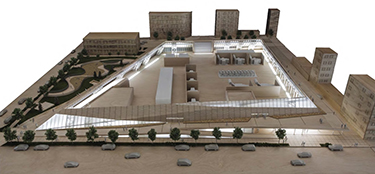|
Subscribe / Renew |
|
|
Contact Us |
|
| ► Subscribe to our Free Weekly Newsletter | |
| home | Welcome, sign in or click here to subscribe. | login |
Construction
| |
 |
May 12, 2016
Survey: The Walsh Group
Specialty: Family-owned provider of construction services that includes design, build, finance, operation and outfitting
Management: Matthew Walsh and Daniel Walsh, co-chairmen (Chicago); Doug Benjamin — Building Group and Ray Riojas — Heavy Civil Group (Seattle Division managers)
Founded: 1898
Headquarters: Chicago; local office in Tukwila
2015 revenue: $4.95 billion
Projected 2016 revenue: $5.2 billion
Projects: Denny Substation, Seattle; VA Hospital seismic upgrades, Seattle; JBLM air traffic control tower
The Walsh Group is working on some of the biggest public projects in the country, as well as at the local level. Doug Benjamin, manager for the Seattle Division, talked about what Walsh likes about public projects, and what it sees as some of the coming trends and challenges.
Q: Which market sectors are the strongest?
A: In Seattle we are seeing a lot of activity in public procurement. The market is evolving from the traditional design-bid-build model into alternative delivery, which is exciting. According to the 2015 Engineering News-Record’s Top Contractors, Walsh is the eighth largest design-build firm in the nation. We see a lot of value in alternative delivery, specifically design-build, and the benefits it offers to both the client and project teams. Walsh is involved with several of the largest public projects in North America on the equity and construction side.
Q: What will be your most popular services in the next few years?
A: Alternative financing and outfitting. As funding constraints occasionally affect clients, we have seen a real opportunity to partner with clients in need of capital through lease backs and public-private partnerships. Additionally we see our Initial Outfitting and Transition Planning services gaining traction in markets beyond our healthcare clients. We are a relationship-driven contractor and seek opportunities to meet the unique needs of our clients by delivering the right team with the knowledge and expertise to execute the work.
Q: Has new technology changed what you do?
A: New technologies, such as building information modeling and laser scanning, are providing a forum for us to work more collaboratively with our design and field partners. In Seattle we have adopted BIM Field 360 on all of our projects. This program allows us to improve our field work flow in managing issues using iPads for accessing construction documents. Essentially this technology allows us to go paperless and provides a virtual space to capture all the information associated with the project in the field. This has also helped our clients in seeing everything in a virtual form, allowing a more collaborative working process. We also have incorporated lean construction techniques in our preconstruction and planning processes, which have allowed us to design and build more efficiently and creatively.
Q: What sustainability measures does Walsh emphasize?
A: Walsh has always been committed to sustainability. We have dedicated in-house resources to manage LEED and sustainable expertise in our preconstruction, new construction and renovation projects. Our corporate campus in downtown Chicago is a model for sustainable corporate construction. The project was LEED platinum certified with the sixth highest total point achievement of any project submitted to the USGBC.
Q: How does Seattle compare to other markets you are in?
A: Seattle is thriving. With so many companies expanding or relocating to Seattle, it’s an exciting time for our market. There is a lot of potential here. Additionally, we believe Seattle is insulated and well positioned for continued growth compared to some of our other regional markets where the diversity of clients and opportunities are not as expansive.
Q: What is the biggest issue facing the industry?
A: One of the most challenging issues in the industry right now is skilled labor shortages. The subcontractor community is currently at high capacity. Walsh believes proactive planning will help reduce these market risks. Additionally we also partner with our subcontractors to develop their scope of work that fits their business model. We have developed smaller bid packages that require less of their resources to accommodate some of these potential risks. Walsh has also increased our outreach outside of the local labor market to regional and national subcontractors as a solution to managing the local shortages and limited availability.
Other Stories:
- Another looming industry shortage: leaders
- Specialty Contracting Interior
- Specialty Contracting Exterior
- Specialty Construction
- Specialty Construction Demolition
- Tenant Improvement/Renovation
- Survey: Rush Companies
- Survey: Lease Crutcher Lewis
- Survey: Swinerton Builders
- Survey: Adolfson & Peterson Construction
- Survey: Skanska
- Mechanical Construction
- Mixed-Use Construction
- Industrial Construction
- 3 keys to managing on-the-job injuries
- Top 10 equipment acquisition trends for 2016
- Does your fall protection plan start at the top?
- Taming energy hogs with efficient HVAC units
- WSDOT finishing ‘The Rest of the West’ on SR 520
- IPD takes preconstruction to the next level
- Eagle of Excellence • Multifamily Construction
- Commercial Construction ($1 million to $5 million)
- Community/Public Service
- Historic Preservation/Restoration
- Survey: Hoffman Construction Co.



